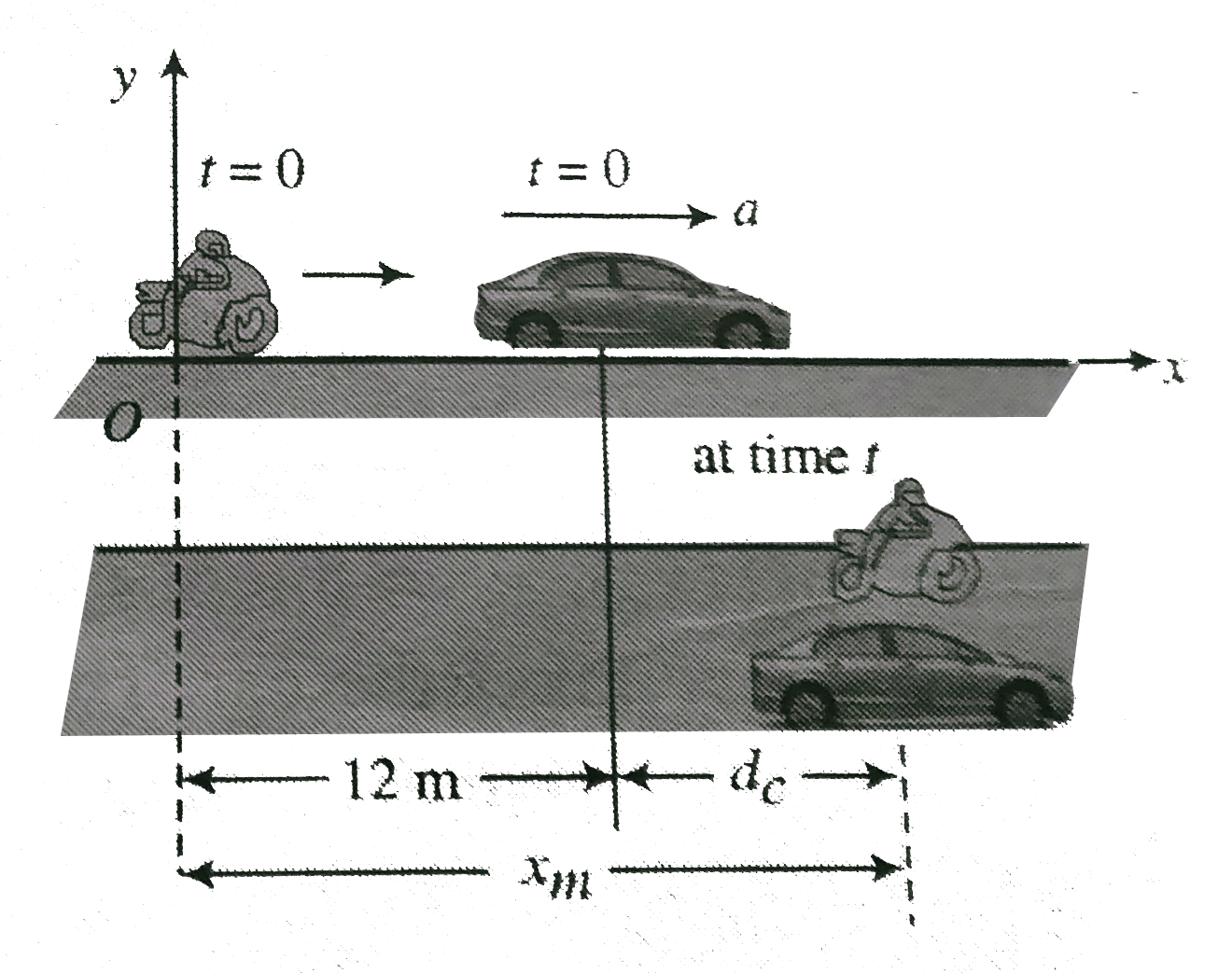The energy required to accelerate a car from 10 m/s to 20 m / s is how many times the energy required to accelerate the car from rest to 10 m /s
Work done on the object in 30 s is zero
2 W
3 W
4 W
The correct Answer is:C
To solve the problem of finding how many times the energy required to accelerate a car from 10 m/s to 20 m/s is compared to the energy required to accelerate the car from rest to 10 m/s, we can follow these steps:
Step 1: Understand the Concept of Work Done
The work done (energy required) to accelerate an object is equal to the change in kinetic energy (KE). The kinetic energy of an object is given by the formula:
KE=12mv2
where m is the mass of the object and v is its velocity.
Step 2: Calculate Work Done from Rest to 10 m/s
1. Initial velocity (u) = 0 m/s (the car starts from rest)
2. Final velocity (v) = 10 m/s
3. The work done (W) to accelerate from rest to 10 m/s is:
W=KEfinal−KEinitial=12m(102)−12m(02)
W=12m(100)=50m
Step 3: Calculate Work Done from 10 m/s to 20 m/s
1. Initial velocity (u') = 10 m/s
2. Final velocity (v') = 20 m/s
3. The work done (W') to accelerate from 10 m/s to 20 m/s is:
W′=KEfinal−KEinitial=12m(202)−12m(102)
W′=12m(400)−12m(100)
W′=12m(400−100)=12m(300)=150m
Step 4: Compare the Two Work Done Values
Now, we need to find how many times W′ is compared to W:
W′W=150m50m
The mass m cancels out:
W′W=15050=3
Conclusion
The energy required to accelerate the car from 10 m/s to 20 m/s is 3 times the energy required to accelerate the car from rest to 10 m/s.
The work done (energy required) to accelerate an object is equal to the change in kinetic energy (KE). The kinetic energy of an object is given by the formula:
KE=12mv2
where m is the mass of the object and v is its velocity.
1. Initial velocity (u) = 0 m/s (the car starts from rest)
2. Final velocity (v) = 10 m/s
3. The work done (W) to accelerate from rest to 10 m/s is:
W=KEfinal−KEinitial=12m(102)−12m(02)
W=12m(100)=50m
1. Initial velocity (u') = 10 m/s
2. Final velocity (v') = 20 m/s
3. The work done (W') to accelerate from 10 m/s to 20 m/s is:
W′=KEfinal−KEinitial=12m(202)−12m(102)
W′=12m(400)−12m(100)
W′=12m(400−100)=12m(300)=150m
Now, we need to find how many times W′ is compared to W:
W′W=150m50m
The mass m cancels out:
W′W=15050=3
The energy required to accelerate the car from 10 m/s to 20 m/s is 3 times the energy required to accelerate the car from rest to 10 m/s.
Topper's Solved these Questions
- WORK, ENERGY AND POWERBOOK - DC PANDEY ENGLISHCHAPTER - WORK, ENERGY AND POWEREXERCISE - MEDICAL ENTRANCE SPECIAL QUESTIONS
16 Videos
- WORK, ENERGY AND POWERBOOK - DC PANDEY ENGLISHCHAPTER - WORK, ENERGY AND POWEREXERCISE - MATCH THE COLUMNS
7 Videos
- WORK, ENERGY AND POWERBOOK - DC PANDEY ENGLISHCHAPTER - WORK, ENERGY AND POWEREXERCISE - CHECK POINT 6.3
10 Videos
- WORK, ENERGY & POWERBOOK - DC PANDEY ENGLISHCHAPTER - WORK, ENERGY & POWEREXERCISE - Level 2 Comprehension Based
2 Videos
- WORK, POWER AND ENERGYBOOK - DC PANDEY ENGLISHCHAPTER - WORK, POWER AND ENERGYEXERCISE - E Integer Type Questions
11 Videos
Similar Questions
The velocity of an object increases at a constant rate from 20 m s−1 to 50 m s−1 in 10 s. Find the acceleration.
View SolutionCar A has an acceleration of 2m/s2 due east and car B,4m/s2. due north. What is the acceleration of car B with respect to car A?
View SolutionCar A has an acceleration of 2m/s2 due east and car B,4m/s2. due north. What is the acceleration of car B with respect to car A?
View SolutionA car starts form rest and accelerates uniformly for 10s to a velocity of 8ms−1. It then runs at a constant velocity an dis finally brought to rest in 64m with a constant retardation. The totla distance covered by the car is 584m Find the value of acceleration, retardation, and totl time taken.
View SolutionA heavy ball is suspended from the ceiling of a motor car through a light string. A transverse pulse travels at a speed of 60cms−1 on the string when the car is at rest and 62cms−1 when the car accelerates on a horizontal road. Find the acceleration of the car. Take g=10ms−2
View SolutionHow much force is required to produce an acceleration of 2ms−2 in a body of mass 0.8 kg ?
View SolutionA car starts from rest with an acceleration of 6m/s2 which decreases to zero linearly with time, in 10 seconds, after which the car continues at a constant speed. Find the time required for the car to travel 400 m from the start
View SolutionA car accelerates from rest at a constant rate of 2ms−2 for some time. The it retatds at a constant rate of 4ms−2 and comes to rest. It remains in motion for 6s.
View SolutionA car moving on a straight road accelerates from a speed of 4.1 m/s to a speed of 6.9 m/s in 5.0 s. What was its average acceleration?
View SolutionA motorcyclist situated at origin is located at a distance 12m. Behind a car (Fig. 4.150).
 .
.
Att=0 the motorcyclist stars moving with a constant velocity v=8ms−1 and same time the car starts acceleration from rest with a=2ms&(−2), (a) When and wher do they meet?
View Solution
